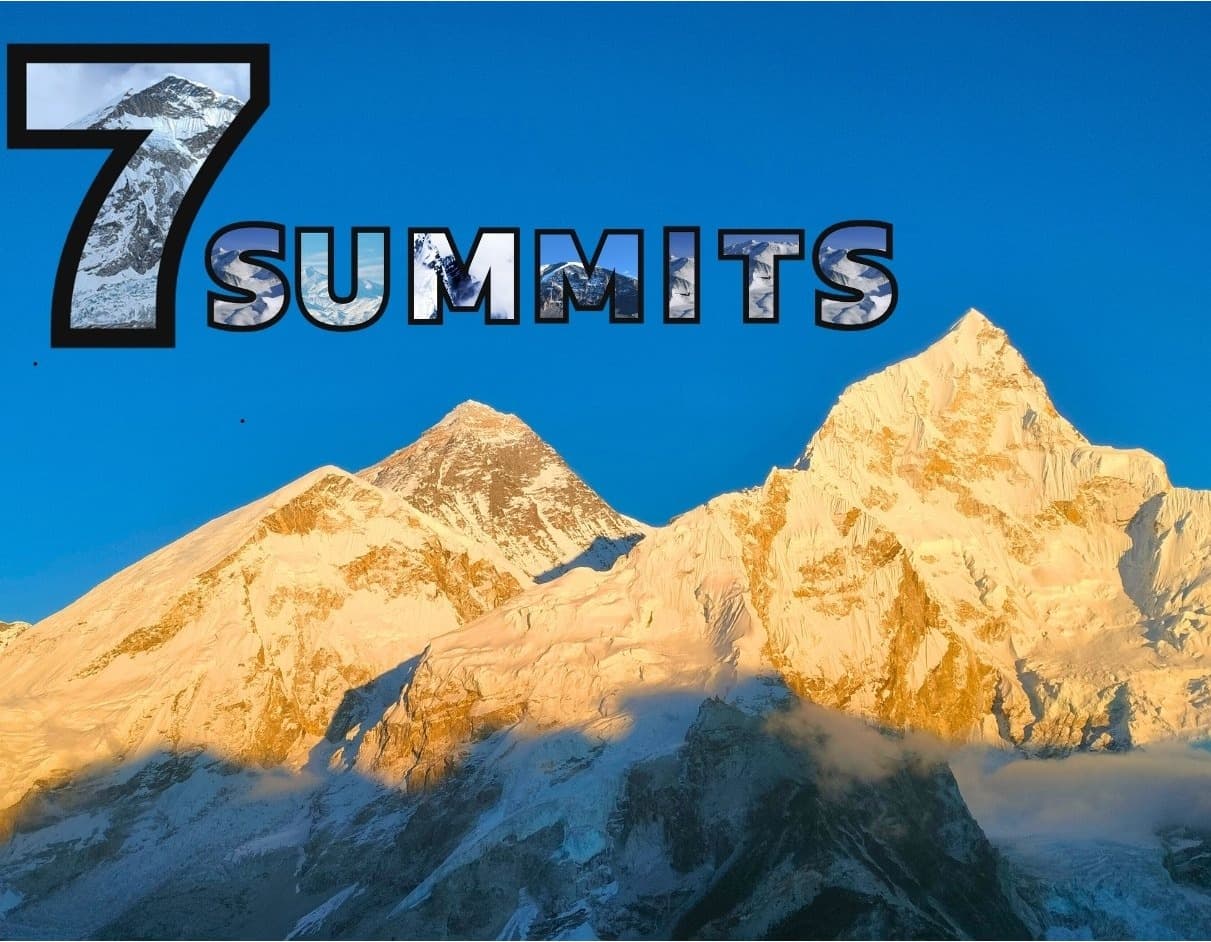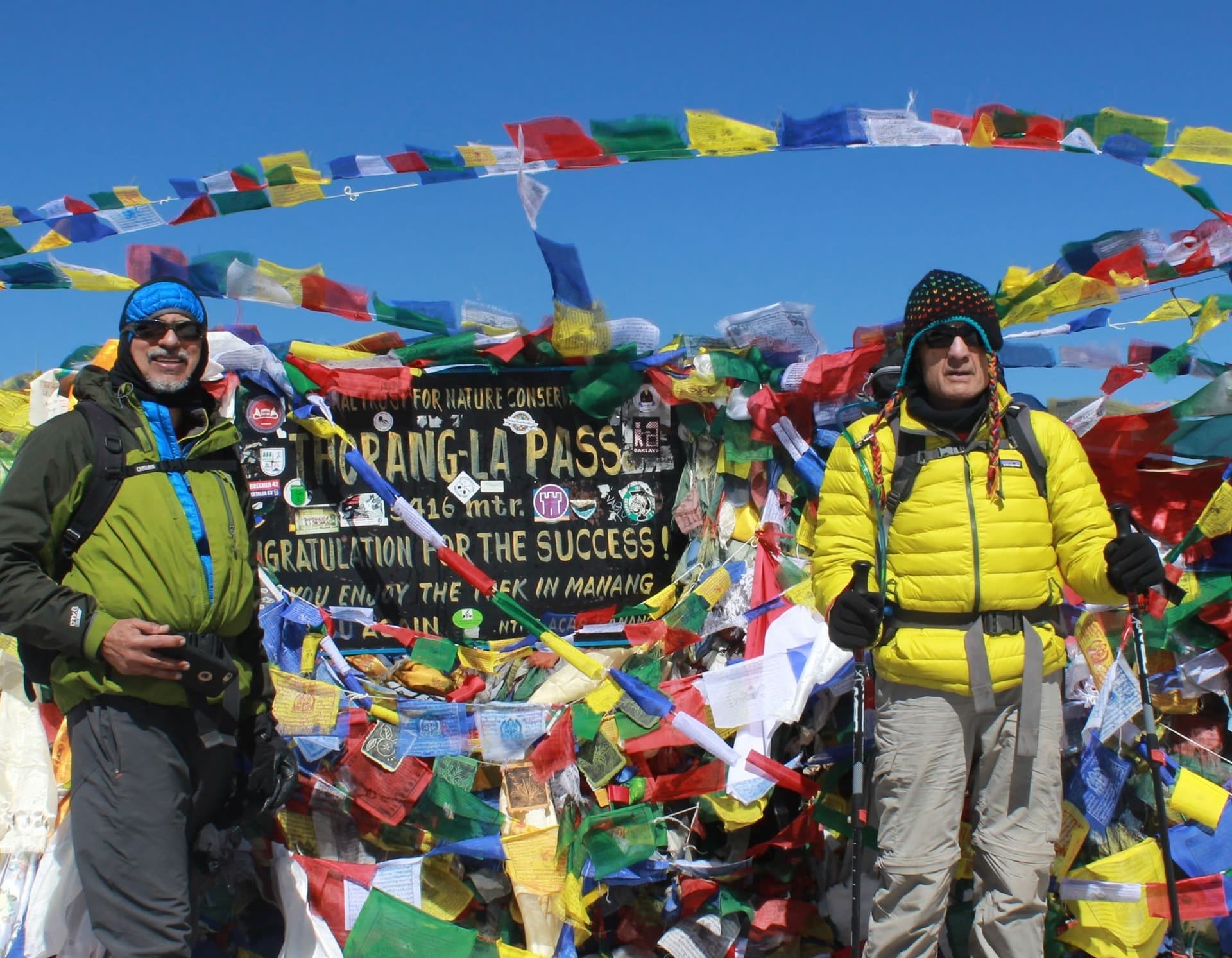- Nepal Boudhanath: A divine site to practice Tibetan Buddhism
- The great stupa of Boudhanath
- The Buddha's eyes
- Touring the Tibetan settlements
- Shop for Tibetan Souvenirs
- A Spiritual Symphony: Daily life – Boudhanath Stupa
- Boudhanath Stupa Architecture
- Boudha Stupa Exact Location: Where is Boudhanath Located?
- Opening Hours of Boudhanath Stupa
- Rules and Guidelines for Tourists around Boudhanath Stupa
For Nepalese, Boudhanath signifies peace and tranquility. The world heritage site is always bustling with visitors and pilgrims. Locally called "Boudha," the heritage site is a central spiritual hub for Buddhist followers. Although a religious site draws many visitors, it illuminates a peaceful and calm environment for visitors. And for that reason alone, many travelers visit the heritage site despite its bustling nature. Boudhanath Stupa is one of South Asia's largest spherical stupas and the only one of its kind in the entire world.
The stupa's design is a Mandala Structure, and its layout is unique in the world. There are several stories behind creation of the Boudhanath stupa, which we will explore in the section below. Overall, Boudhanath is a celebrated religious site in Nepal, rich in culture, architecture, and spiritual significance. The vibrancy and tranquility of the palace are truly astounding and exciting to experience.
Hence, we list the top 7 best reasons to visit the Bouddhanath stupa while you are in Nepal.
Nepal Boudhanath: A divine site to practice Tibetan Buddhism
The stupa's location is attractive, as it once lay on the ancient trade route to Tibet. Many Tibetan merchants visited the stupa and performed their rites and rituals, offering their homage to the great divinity.
The great stupa of Boudhanath
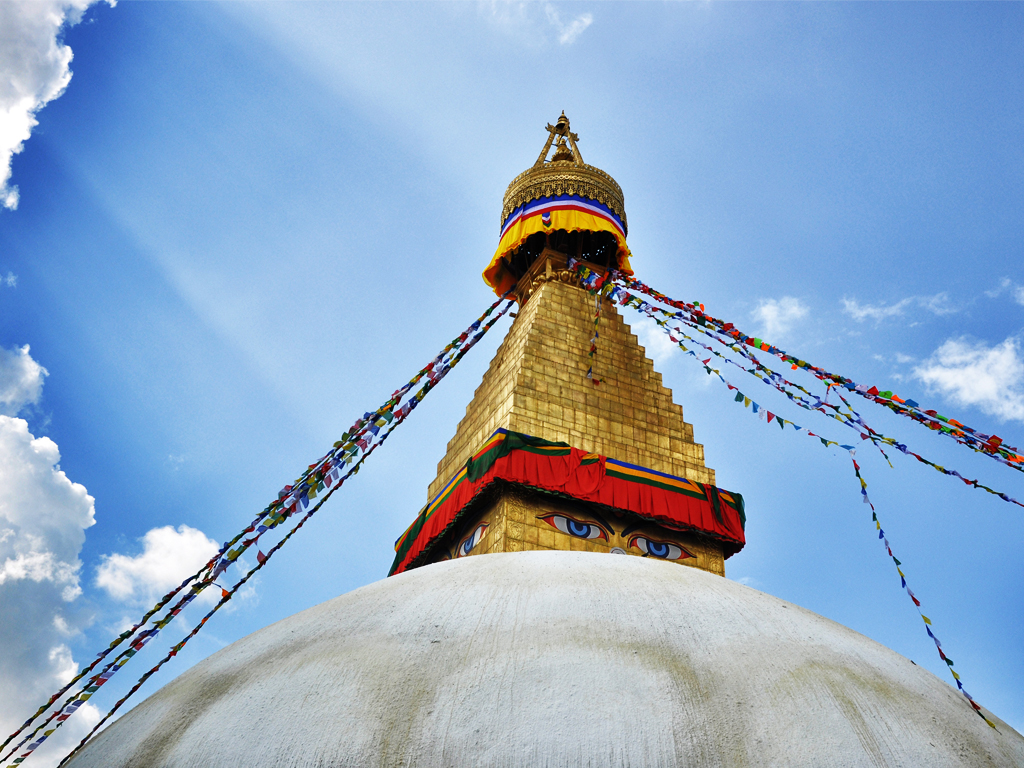
The Nepal Boudhanath stupa was built in the 5th century and is one of the most magnificent stupas in the world. The stupa represents the mind of all the Buddhas. There is a popular myth associated with the place. There is a belief that whoever prostrates and circumambulates with a pure heart at the great stupa creates good karma, fulfilling all their wishes. The religious sites receive thousands of worshipers every day. Moreover, for generations, the stupa has been a place for seeking protection, inspiration, purification, and blessings for the devotees who worship at the stupa with great devotion.
The Buddha's eyes
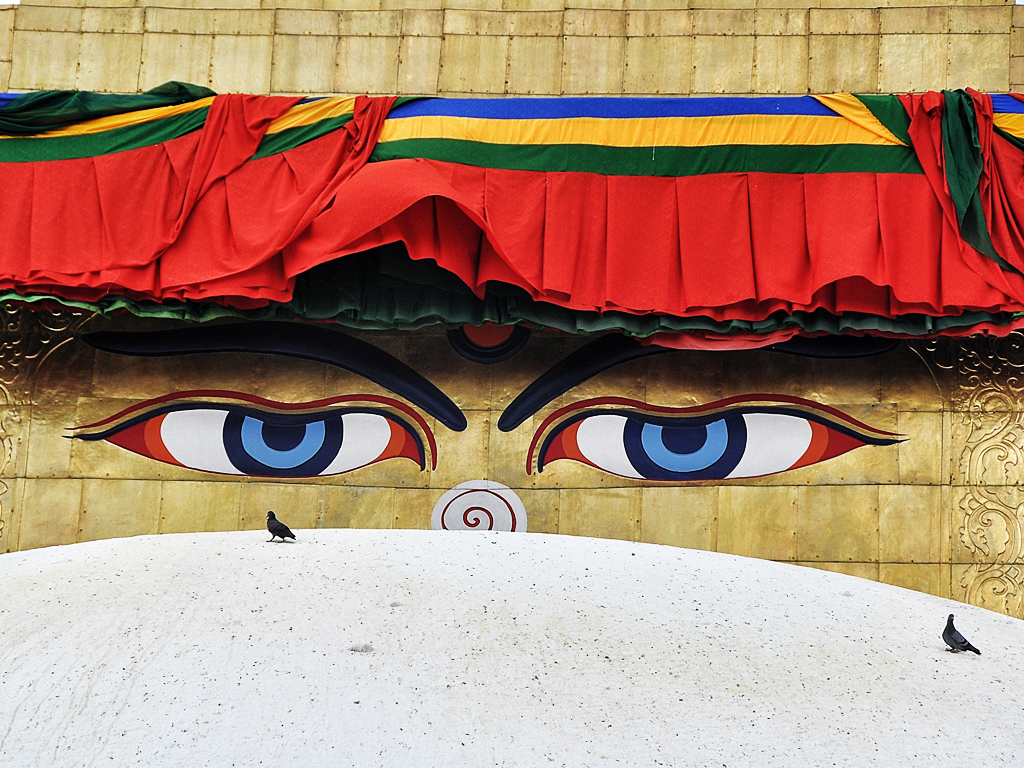
For hundreds of years, the Boudhanath stupa has stood as a beacon of Buddhist belief, towering over the surrounding town as a giant mandala of peace, beauty, and giant eyes. On the top of the stupa are the Buddha's all-seeing eyes. The Buddha's eyes are also known as wisdom eyes, which symbolize that Buddha's eyes can look out in all four directions and represent omniscience. The Buddha's eyes have become a symbol of Nepal itself as well.
Touring the Tibetan settlements
When China seized Tibet, many Tibetans flew to India and some to Nepal. And the majority of fled Tibetans resided in the Boudha area. Besides, before China took over Tibet, Boudha was already a trading site between Nepal and Tibet. It just manifested more when seizing happened. Therefore, most areas around the heritage site display much Tibetan influence. Each alleyway leading to a different part of the Boudha from the heritage site filled the street with a small Tibetan restaurant. Tibetan dishes are distinctly different from Newari cuisine, so pause to devour the tasty Tibetan delicacies for a short time. The streets get lively with incense and Tibetan restaurants.
Shop for Tibetan Souvenirs
Shopping around the stupa of Boudhanath is also a fun and exciting part of the tour. While shopping, you learn a lot about ancient traditional relics and artifacts. The circumference of the stupa has several Tibetan souvenir shops. There is so much one can find around the stupa's edge, from sacred stones to Tibetan Thankas and jewelry. Some unique souvenirs most travelers prefer to buy are the Tibetan prayer wheel, Tibetan knives, Tibetan medicines, and a few others.
A Spiritual Symphony: Daily life – Boudhanath Stupa
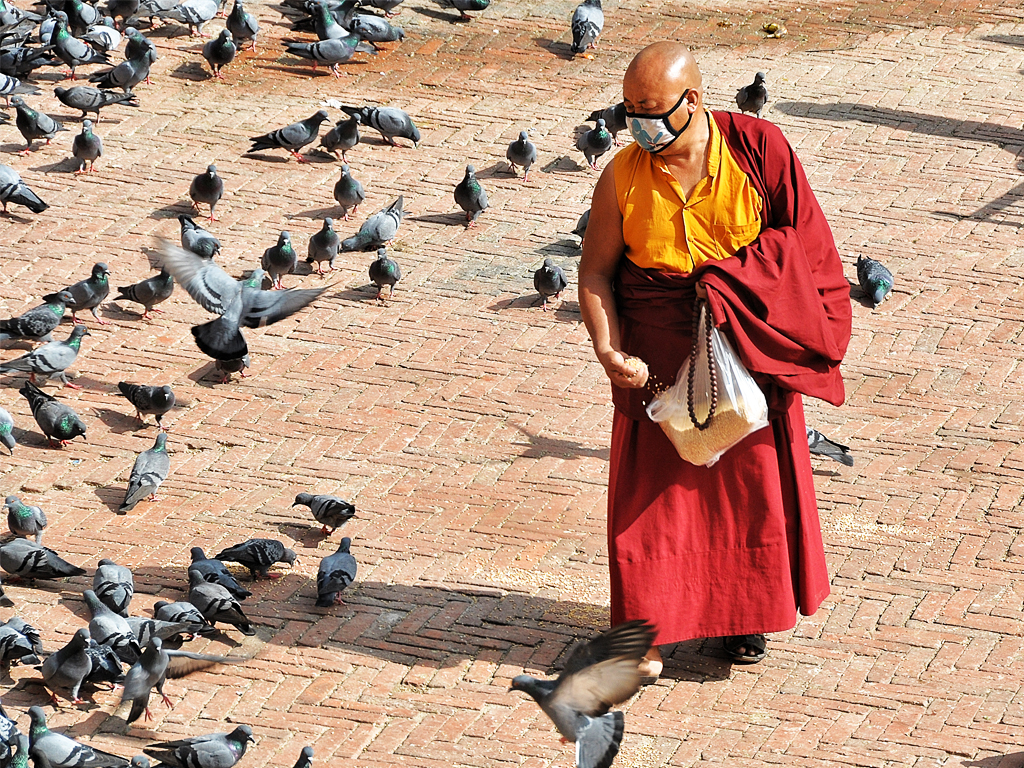
Daily life around Boudhanath Stupa is deeply spiritual. People seek enlightenment through various practices. Monks in maroon robes go about their activities with the sound of drums in the background. The constant spinning of prayer wheels mixes with the soft whispers of pilgrims walking around the stupa. Vendors sell incense, prayer beads, and other religious items, adding to the sacred atmosphere.
Boudhanath Stupa Architecture
The Boudhanath Stupa in Kathmandu is a monumental Buddhist structure following a mandala design, symbolizing the universe and the path to enlightenment. Its architecture includes a large hemispherical dome, representing the heavens, and a stepped pinnacle, symbolizing the stages of enlightenment. The base of the stupa, a terraced plinth, represents the earth, while the surrounding prayer wheels and flags enhance the spiritual atmosphere.
Architectural elements and Boudha symbolism:
Mandala Design: The stupa's overall design is based on the mandala, a sacred geometrical figure symbolizing the universe and its interconnectedness.
Hemispherical Dome: The large dome represents the sky or heavens, symbolizing the realm of enlightenment.
Stepped Pinnacle: The thirteen steps on the spire represent the thirteen stages a human being must pass through to achieve nirvana.
Harmika (Square Box): Located atop the dome, the harmika is painted with the Buddha's all-seeing eyes, symbolizing wisdom and compassion.
Plinth (Base): The plinth, a terraced base, represents the Earth and is the foundation of the stupa.
Prayer Wheels and Flags: These are prominent features surrounding the stupa, symbolizing prayers and mantras carried by the wind, aiding in the spiritual journey.
Deities and Images: The stupa features numerous statues and carvings of Buddha and various deities, further enriching its spiritual significance.
In essence, the Boudhanath Stupa's architecture is a visual representation of Buddhist cosmology and the path to enlightenment, making it a significant religious and cultural landmark in Nepal.
Boudhanath Stupa: History and Significance
Boudhanath Stupa, also known as Boudha Stupa, Khasti Chaitya, or Jarung Kashor Stupa, is the largest spherical stupa in the world and the most significant stupas in Nepal, located in Kathmandu. Its origins trace back to the Licchavi period (around the 4th–6th century CE), with historical records attributing its construction to King Shivadeva (590–604 CE) or Manadeva (464–505 CE).
According to Newar or Nepami, King Vikramjit sacrificed himself to bring water to Kathmandu, and his son, looking for redemption, followed the instructions of priests (pujari), leading to the construction of the Stupa where a flying hen was landed.
Tibetan sources link the stupa to a poultry farmer named Samvari, who, with her sons, built it with the king’s permission. Her sons later reincarnated as King Trisong Detsen, Shantarakshita, Padmasambhava, and a royal minister, playing key roles in the spread of Buddhism in Tibet.
- Ancient Structure:Boudhanath is believed to have been built shortly after the death of Buddha.
- Living Tradition:The stupa is a living testament to Nepal's rich cultural heritage and the enduring tradition of Buddhism.
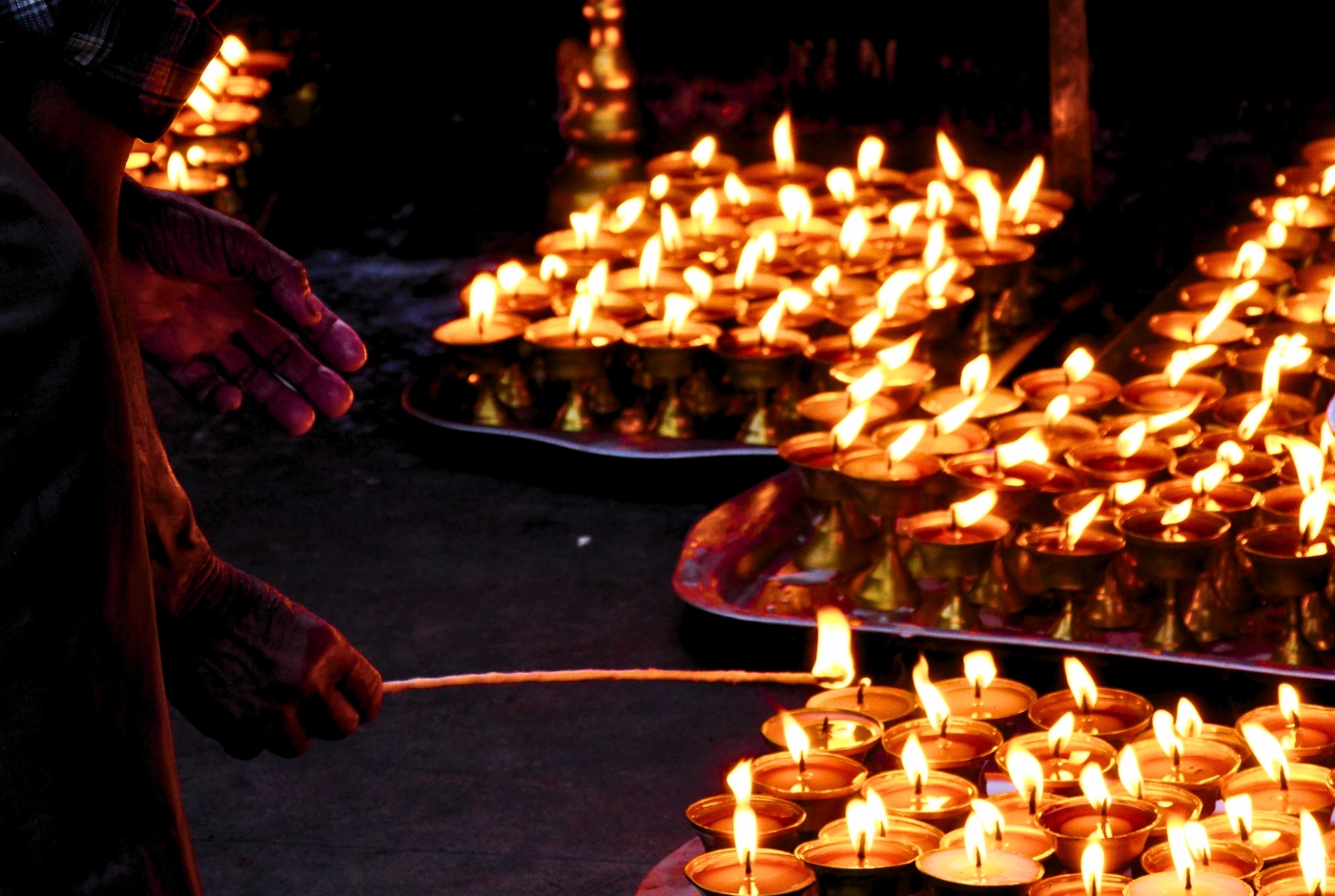
Tibetan Connection and Cultural Influence
Boudhanath gained significance as an essential religious center for Tibetan Buddhists situated on a historic trade path between Tibet and India. Many Tibetan refugees relocated near the stupa after the 1959 Tibetan uprising, and this population growth resulted in the founding of more than 50 gompas in the region.
- Pilgrimage Site: Boudhanath is a major pilgrimage destination for Buddhists worldwide, particularly Tibetan Buddhists.
- Spiritual Center: It serves as a hub for Buddhist practices like circumambulation (kora), chanting mantras, and offering prayers.
- UNESCO World Heritage Site: Its designation recognizes the stupa's cultural and religious importance and the need for its preservation.
- Symbol of Enlightenment: The stupa embodies the essence of Buddha's teachings and is considered a symbol of enlightenment.
- Connection to Guru Rinpoche: Boudhanath is believed to be connected to Guru Rinpoche (Padmasambhava), who is considered a central figure in Tibetan Buddhism.
2015 Earthquake and Restoration
The severe damage inflicted by the April 2015 Nepal earthquake hit the spire most profoundly. An intensive reconstruction outcome required $2.1 million and 30 kg of gold from massive Buddhist group donations and individual private contributions that the Boudhanath Area Development Committee (BADC) organized. Restoration work enabled the stupa to open its doors to the public on 22 November 2016, making it the first earthquake-damaged World Heritage Site in Nepal to be fully restored.
Festival Feasts at Boudhanath Stupa
The Boudhanath Stupa bursts with joy and vibrancy during festivals like Losar, the Tibetan New Year, and Saka Dawa, the day of Buddha's birth. These festivals are a riot of color, sound, and celebration, with elaborate rituals, fluttering flags, and genuine merriment.
- Losar (Tibetan New Year):This festival is celebrated in February or March and is a major event at Boudhanath, with Tibetan Buddhists gathering for music, dance, and prayers.
- Buddha Jayanti: This festival marks Buddha's birth, enlightenment, and death, and is celebrated in April or May. It involves lighting butter lamps, offering prayers, and decorating the stupa, attracting many devotees.
- Other Festivals: Boudhanath also hosts other festivals throughout the year, including Mamla Jatra, Chechyu Puja, Temal Jatra, and Ropai Jatra.
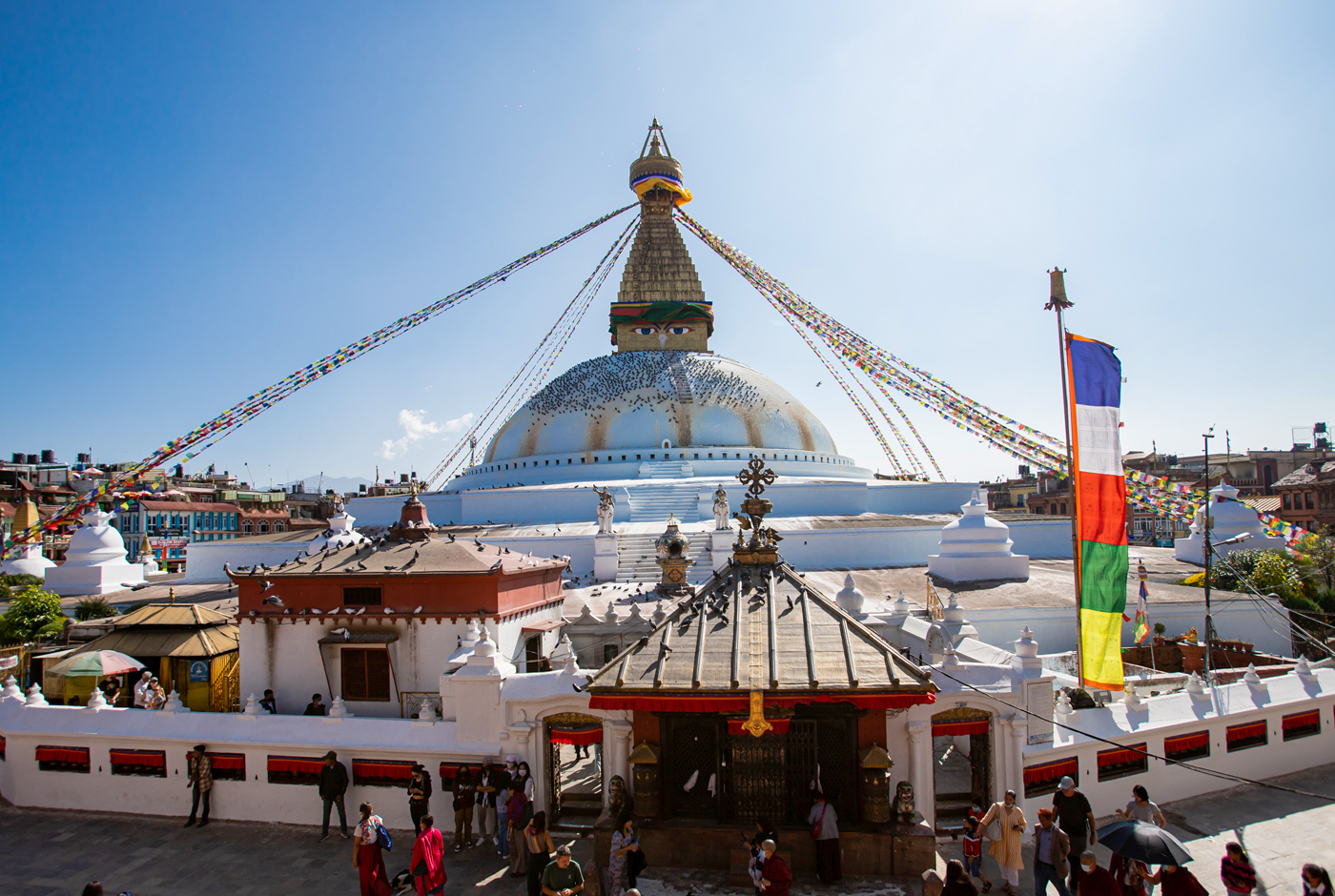
Boudhanath Stupa meaning
Boudhanath Stupa, in Nepali, translates to "Lord of Awakening" or "the Lord who is awakened". It's also known as Khāsti Chaitya, meaning "dewdrop stupa" in Newari, which is the language of the Kathmandu Valley. The stupa is a significant Buddhist site, considered the embodiment of the enlightened mind of all Buddhas and a source of spiritual energy.
- Boudhanath (Nepali): This name signifies the stupa's symbolic representation of the Buddha's enlightened state and is associated with the concept of awakening.
- Khāsti Chaitya (Newari): This name refers to the construction of the stupa using collected dewdrops, as the area experienced a severe drought.
- Jarung Kashor (Tibetan): This name, meaning "Let it be done, Slip of the tongue", is a Tibetan name associated with the stupa's construction.
Boudha Stupa Exact Location: Where is Boudhanath Located?
Coordinates: 27°43′17″N 85°21′43″E
Boudhanath Stupa Location: Kathmandu, Nepal
Boudhanath Stupa is located in Boudha, Kathmandu, Nepal, approximately 6 km from Tribhuvan International Airport (TIA) and 11 km northeast of Kathmandu Durbar (Basantapur Durbar) Square, about 6 km from Tribhuvan International Airport and around 7.5 km from Thamel area.
How to reach Boudha Stupa? Bus, Taxi, or Hike?
By Public Bus: Several public buses operate from different parts of Kathmandu (Machhapokhari and Balaju) to Boudhanath. However, routes can be confusing for first-time visitors.
By Taxi: The easiest and most direct way to reach Boudhanath is by taxi, which takes around 20–30 minutes from central Kathmandu (Thamel), depending on traffic.
By using Mobile Apps: Another easiest way to get Boudha Stupa is to use the Pathao or Indrive mobile apps. Simply download these apps on your mobile phone, book a bike or car, and write the name of the destination, "Boudhnath Stupa," and they will call you after a few minutes. Or, if you are near the Boudhanath area, you can use Google Maps instead; it will give you the exact directions and distance between you and Boudhanath and the best route as well.
Opening Hours of Boudhanath Stupa
The best time to visit Boudhanath Stupa is during early morning (5:30 – 7:30 AM) or late evening (7:00 – 9:00 PM) for a more serene experience. Early morning offers a tranquil atmosphere and the chance to witness monks performing prayers, while the late evening provides a magical ambiance with butter lamps illuminating the stupa.
Early Morning (5:30 – 7:30 AM):
- Serene Atmosphere: The stupa is less crowded, allowing for a more peaceful experience.
- Monk Prayers: You can witness monks performing their morning worship and prayers.
- Local Practices: You can join local pilgrims performing their "kora" (walking around the stupa).
Late Evening (7:00 – 9:00 PM):
- Magical Illumination: The stupa is beautifully illuminated by butter lamps and other lights, creating a mesmerizing atmosphere.
- Reduced Crowds: Compared to daytime, the crowds are smaller, allowing for a more intimate experience.
- Spiritual Atmosphere: Witness the devotion of pilgrims as they light lamps and make offerings.
How old is Boudhanath Stupa?
Boudhanath Stupa is over 1,500 years old, with construction believed to have begun around 600 AD. While some sources suggest it was built shortly after the death of the Buddha, more commonly accepted dates place its construction during the reign of King Manadeva in the 5th century or during the Licchavi period (5th-6th century CE). The stupa has undergone renovations and expansions over time, and the current structure is believed to be from the 14th century.
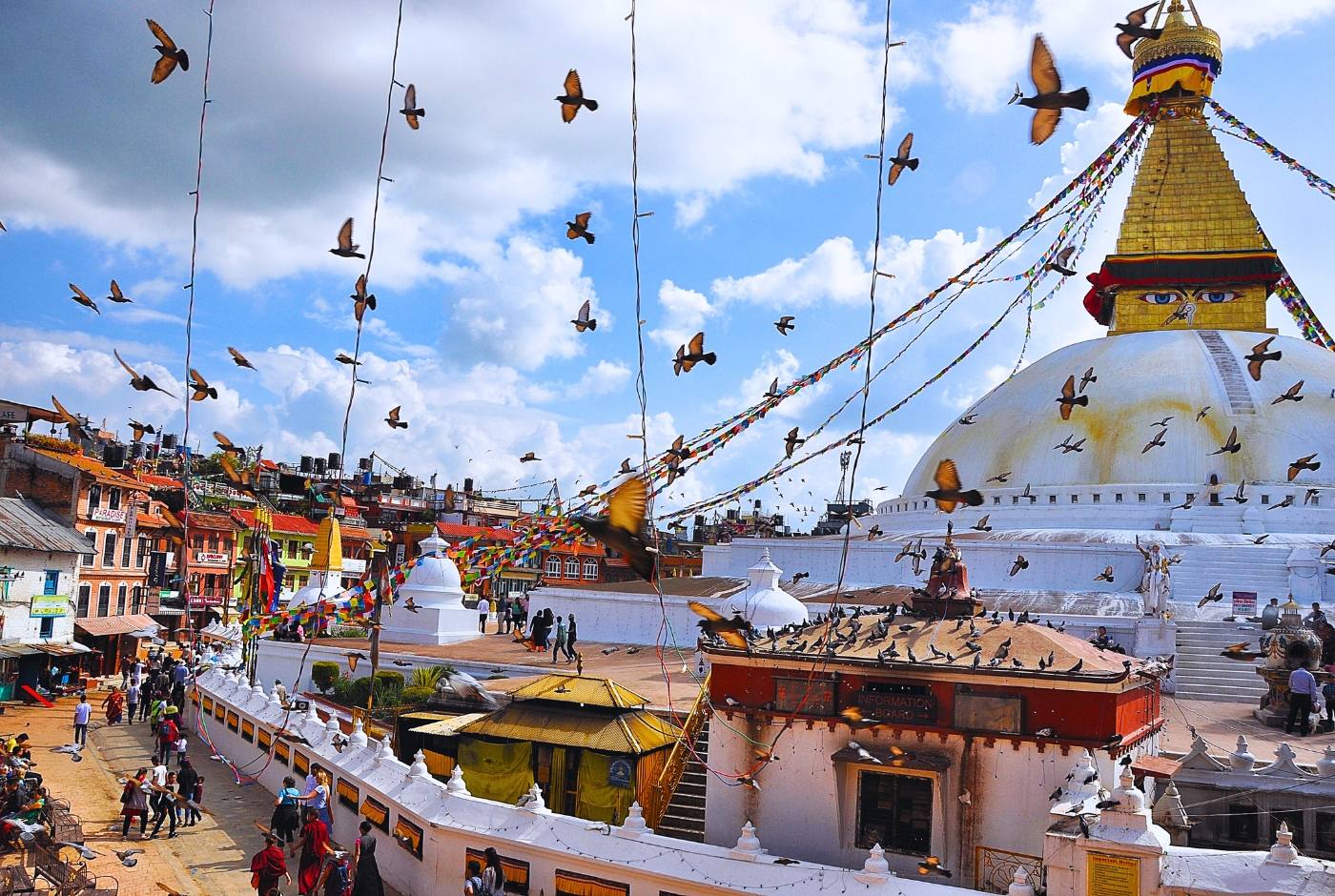
Rules and Guidelines for Tourists around Boudhanath Stupa
Boudhanath Stupa has specific guidelines for tourists, primarily focused on respecting its religious significance and maintaining the peace of the site. Entry fees are charged for foreign and SAARC nationals, while Nepalese citizens and children under 10 are free. Visitors should walk clockwise around the stupa, keep the stupa to their right, and spin prayer wheels clockwise.
Key Rules and Etiquette:
- Entry Fee: Foreign nationals pay NPR 400, SAARC nationals pay NPR 100, and Nepalese citizens and children under 10 are free.
- Walking Direction: Walk clockwise (to your right) around the stupa, as this is considered the sacred path.
- Prayer Wheels: Spin prayer wheels clockwise.
- Respect: Maintain a quiet and respectful demeanor, especially during prayer times and ceremonies.
- Dress Code: While there's no strict dress code, it's customary to dress modestly, covering your shoulders and knees, especially if you intend to enter the stupa itself.
- No Wheels: No vehicles (two-wheelers or four-wheelers) are allowed on the circular path around the stupa, according to the Magical Nepal.
Practical Tips:
- Entry Points: Ticket offices are located on the major streets leading to the stupa square.
- Staying Local: If staying in a local guesthouse, you may only need to pay the entry fee once.
- Photography: Photography is generally allowed, but be mindful of your surroundings and avoid disturbing prayers or ceremonies.
- Enjoy the Atmosphere: Boudhanath Stupa is a place of deep spiritual significance, so take time to appreciate its beauty and the energy of the site.
What is the entrance fee to Boudhanath Stupa?
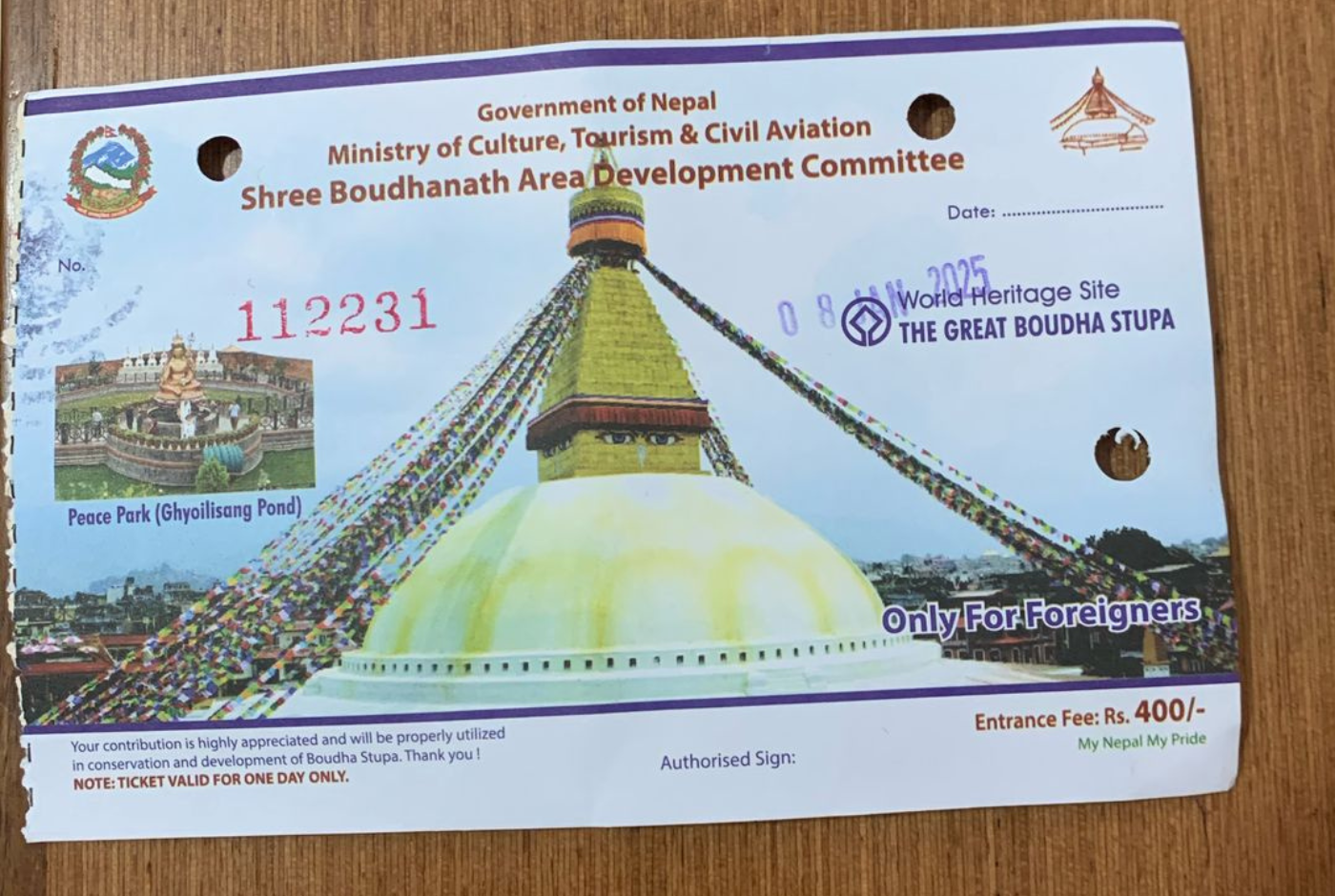
The entrance fee to the Kathmandu Boudhanath Stupa isNPR 400 per person for international travelers. This ticket for Boudha is valid for only one day. The cost for SAARC Nationals is slightly less and only costs NPR 100.
Boudhanath Stupa is the perfect spot around Kathmandu Valley to spend your days blissfully. At the end of the tour, find a beautiful rooftop restaurant near Boudha and enjoy the stupa's panoramic view with a cup of hot coffee or tea. Don't miss the unique architecture and peaceful surroundings of Boudhanth Stupa.


